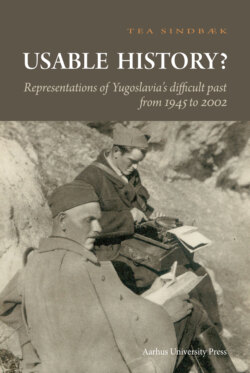Читать книгу Usable History? - Tia Sindbaek - Страница 29
На сайте Литреса книга снята с продажи.
The trial against Mihailović
ОглавлениеFrom 10th June to 15th July 1946, Draža Mihailović was put on trial together with 23 other “traitors and war criminals” with connections to the Chetnik movement. The indictment against Mihailović personally consisted of 47 points, holding him responsible for the actions of Chetnik units throughout Yugoslavia, also the so-called legalized units under the Nedić administration. The greatest focus and by far the largest part of the indictment, points 1-40, concentrated on collaboration, betrayal, attacks on Partisans and their supporters, and other anti-Partisan activity of the Chetniks. Yet a particular chapter, point 41-47, was dedicated to Chetnik war crimes.25
Most mentioned victims of these war crimes were Partisans, but the indictment also held several descriptions of mass murder and large scale massacres of Muslims and Croats. Sometimes bestial details were included, as in this short description of a series of massacres in Dalmatia: “In September 1942, the Chetniks of Petar Baćović killed 900 Croats in Makarska, skinned several Catholic priests alive and set fire to 17 villages.”26 Repeated massacres of thousands of Muslims, particularly in East Bosnia, were also described. Some instances of mass murder of up to thousands of civilians were recounted without stating the ethnicity of the victims – most probably Muslims in these cases.27
The accused were all sentenced to death. The verdict of the trial largely repeated the text of the indictment; again focus was on the collaboration and anti-Partisan activity of the Chetniks, while war crimes were included in a separate, minor, chapter.
Significant efforts were made for the trial against Draža Mihailović and the other Chetnik leaders to reach the public. According to the official excerpts, around 100 journalists were present, many from countries outside Yugoslavia, and the trial’s proceedings were broadcast from Radio Belgrade.28 This all testifies to the intention from the side of the communists to stigmatise Mihailović as a national traitor in the widest possible sphere, inside as well as outside Yugoslavia. The inclusion of Chetnik war crimes in this widely published trial also shows that the regime had no scruples about addressing these issues in public, as long as they were connected to traitors and enemies of the Partisans.
Ill. 3.2. Photograph from the excerpts of the trials against Draža Mihailović and other Chetniks leaders. The original caption states: “The traitor Mihailović on the prisoner’s dock under the weight of the crimes proved before the court”.29
A collection of sources, titled Documents about Draža Mihailović’s betrayal had been published already in 1945. It followed the same pattern as the trial: the Chetniks’ collaboration and anti-Partisan activities were foregrounded, while massacres and ethnic cleansing received far less attention and were not even mentioned in the introduction, where Mihailović’s main crimes, as they occurred in the printed documents, were stipulated.30 A few documents on massacres were included, though. A letter was reprinted and presented by the editors of the documents as Mihailović’s instructions to the commanders in Montenegro to conduct “a truly hitlerish bloodthirsty, terrible slaughter” of the people, aimed at “the cleansing of stately territory of all national minorities and un-national elements”.31 And a small chapter, reprinting internal Chetnik communication, showed how, according to the editors,
… the Chetniks slaughtered tens of thousands of Muslim and Croat lives, [who were] unarmed and helpless, while they at the same time drank and fraternized with the Ustasha, who had killed hundreds of thousands of innocent Serbs, made agreements and recognized ‘the supremacy of the NDH’.32
The trial, as well as the collection of documents, mirrors the communists’ official view and representation that Draža Mihailović and the Chetniks were primarily traitors and enemies of the people, and secondarily war criminals and perpetrators of large massacres and ethnic cleansing. In general, the communists held Mihailović and the Chetniks, as national traitors, responsible for the Partisan-Chetnik struggle and what they called “the fratricidal war”.33 This perspective was also promoted within the historians’ environment.34
